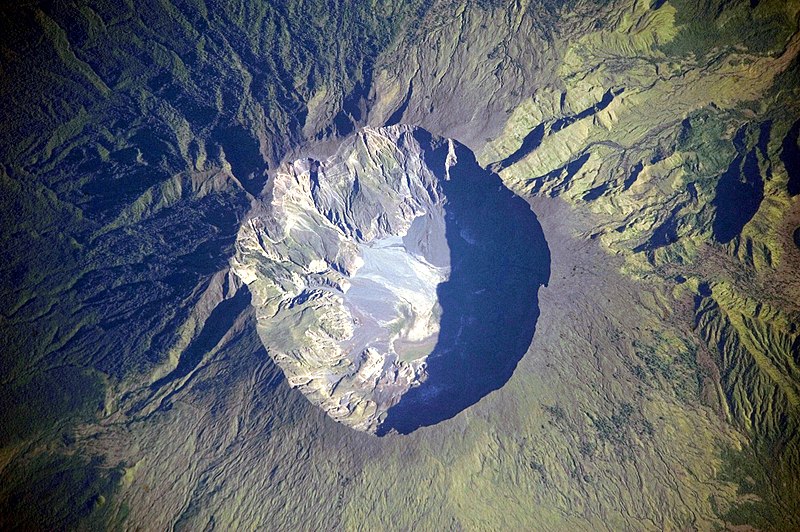Fișier:Mount Tambora Volcano, Sumbawa Island, Indonesia.jpg

Mărimea acestei previzualizări: 800 × 532 pixeli. Alte rezoluții: 320 × 213 pixeli | 640 × 425 pixeli | 1.024 × 680 pixeli | 1.280 × 851 pixeli | 2.560 × 1.701 pixeli | 4.256 × 2.828 pixeli.
Mărește rezoluția imaginii (4.256 × 2.828 pixeli, mărime fișier: 2,29 MB, tip MIME: image/jpeg)
Istoricul fișierului
Apăsați pe Data și ora pentru a vedea versiunea trimisă atunci.
| Data și ora | Miniatură | Dimensiuni | Utilizator | Comentariu | |
|---|---|---|---|---|---|
| actuală | 24 februarie 2011 15:55 |  | 4.256x2.828 (2,29 MB) | Originalwana | higher res |
| 15 aprilie 2010 20:37 |  | 1.440x960 (619 KB) | Rosenzweig | Reverted to version as of 11:04, 19 July 2009. Back to Commons version. | |
| 15 aprilie 2010 20:37 |  | 1.440x960 (459 KB) | Rosenzweig | different version from de.wp | |
| 19 iulie 2009 14:04 |  | 1.440x960 (619 KB) | Originalwana | {{Information |Description={{en|1=This detailed astronaut photograph depicts the summit caldera of the volcano. The huge caldera—6 kilometres in diameter and 1,100 meters deep—formed when Tambora’s estimated 4,000-meter-high peak was removed, and th |
Utilizarea fișierului
Următoarele pagini conțin această imagine:
Utilizarea globală a fișierului
Următoarele alte proiecte wiki folosesc acest fișier:
- Utilizare la af.wikipedia.org
- Utilizare la ar.wikipedia.org
- Utilizare la ast.wikipedia.org
- Utilizare la ban.wikipedia.org
- Utilizare la be.wikipedia.org
- Utilizare la bn.wikipedia.org
- Utilizare la ca.wikipedia.org
- Utilizare la cs.wikipedia.org
- Utilizare la da.wikipedia.org
- Utilizare la de.wikipedia.org
- Utilizare la en.wikipedia.org
- Utilizare la en.wikiversity.org
- Utilizare la en.wikivoyage.org
- Utilizare la eo.wikipedia.org
- Utilizare la es.wikipedia.org
- Utilizare la fa.wikipedia.org
- Utilizare la fr.wikipedia.org
- Utilizare la fr.wiktionary.org
- Utilizare la gl.wikipedia.org
- Utilizare la gor.wikipedia.org
- Utilizare la he.wikipedia.org
- Utilizare la hr.wikipedia.org
- Utilizare la id.wikipedia.org
- Gunung Tambora
- Wikipedia:Hari ini dalam sejarah/April
- Wikipedia:Gambar pilihan/2011
- Wikipedia:Gambar pilihan/Usulan/2011/54 Intro
- Wikipedia:Gambar pilihan/54 2011
- Templat:Hari Ini Dalam Sejarah/April
- Wikipedia:Gambar pilihan/Tempat/Landskap
- Wikipedia:Arsip halaman utama/2023/04/10
- Wikipedia:Arsip halaman utama/2024/04/10
- Utilizare la it.wikipedia.org
- Utilizare la ja.wikipedia.org
- Utilizare la ka.wikipedia.org
- Utilizare la kk.wikipedia.org
Vizualizați utilizările globale ale acestui fișier.



